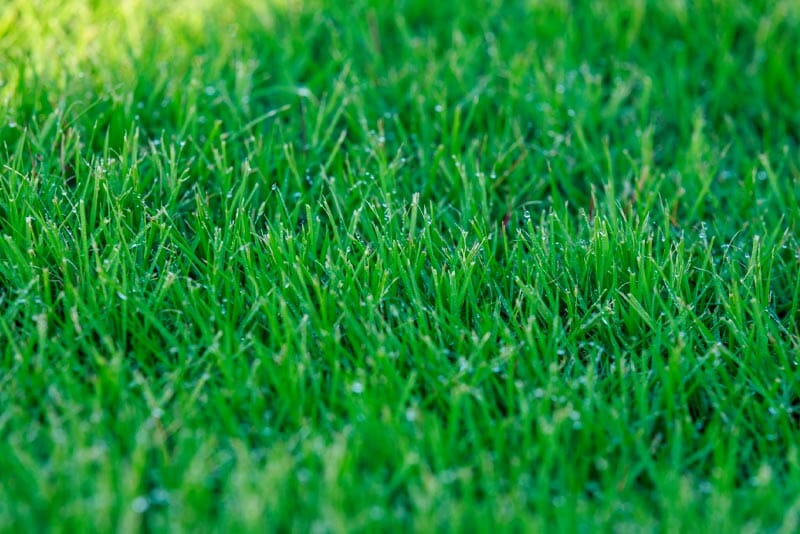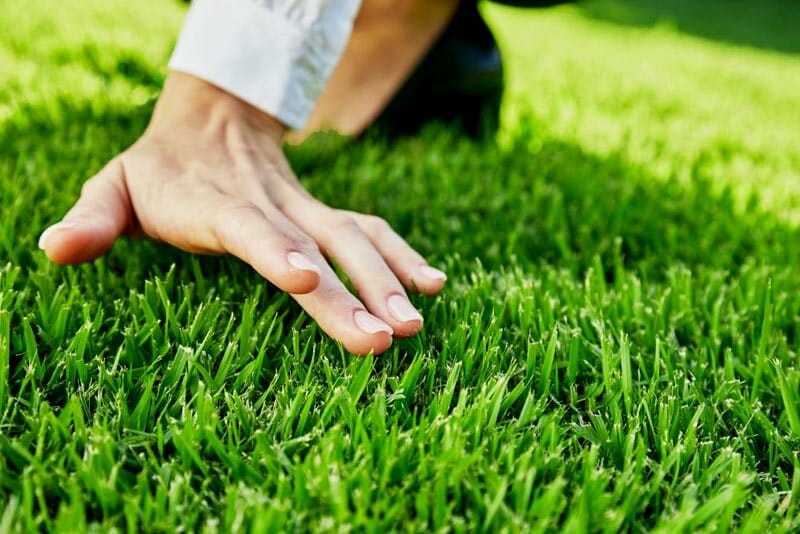Numerous varieties of Zoysia grass possess a strong resilience, generating large rhizomes, stolons, and foliage that withstand decay well. As a result, Zoysia is prone to accumulating thatch. Without appropriate maintenance, this thatch buildup can eventually suffocate and destroy your grass.
It is imperative to dethatch your Zoysia grass lawn to keep it in top shape. Dethatching for this grass type should be done in early spring when the grass is at its peak growth and can recover quickly. The nighttime temperatures should be above 60 °F.
Failure to dethatch Zoysia grass can result in insect and disease infestations as well as drought damage. Avoid dethatching your Zoysia grass lawn during its dormant season, as it may not recover.
What we cover
ToggleCharacteristics of Zoysia grass
Below are the main characteristics of Zoysia grass that make it the ideal turf for your lawn.
- Zoysia is a warm-season grass that has a high tolerance to drought, foot traffic, pests, and diseases.
- It can tolerate light to moderate shade.
- Zoysia grass has low water and maintenance requirements.
- The grass spreads by stolons and rhizomes, so it develops thatch that can kill the lawn if left unchecked.
- It grows slower than most grass types, but it delivers a dense, carpet-like lawn, making it a top choice for most homeowners.
- Typically, Zoysia grass stays light to medium during its active growing season but turns brown during winter dormancy.
- It has better cold tolerance than Bermuda and other warm-season grasses.

When is the best time to dethatch Zoysia grass?
The best time to dethatch Zoysia grass is in the spring when the grass is showing vigorous growth. If the grass is thinning out or has bald spots, aerate and overseed after dethatching. You can also fertilize the lawn to add nitrogen and other nutrients to the soil.
A thin thatch layer of about ¼” can be beneficial to the lawn in the following ways:
- Protect the lawn from harsh weather.
- Help the soil retain moisture.
- Suppress weeds
- Moderate temperature extremes.
However, if the thatch exceeds a thickness of ½”, you should consider dethatching your lawn.
How to check for thatch in Zoysia grass
If the thatch thickness on your Zoysia grass lawn exceeds ½”, you should dethatch it. Here is how you can check if you have a thatch problem:
- Cut several turf plugs about 3 inches deep.
- Examine the profiles of the plugs. If there is thatch, it will be visible as a distinct layer of brown or spongy material laid out horizontally.
- Measure the thickness of the thatch layer.
- Do not dethatch your lawn if the layer is ½” thick or less.
- If the thickness is greater than ½”, dethatch your lawn.
A small thatch layer can help the grass retain moisture, but if it grows thicker, it prevents water and nutrients from reaching the soil.

How to dethatch Zoysia grass?
Zoysia exhibits dense growth, which often leads to thatch. If the thatch layer becomes greater than ½” thick, it is time to dethatch. Here are steps to guide you during the dethatching process.
1. Examine Zoysia grass plugs
Cut a small, three-inch-deep hole in your lawn, then measure the depth of the thatch layer. You can use a trowel or sharp knife to remove the turf plug. Plan to dethatch your yard if the thatch layer is more than 12 inches thick.
2. Dethatch your lawn
Rent a vertical mower or dethatching rake from your local equipment supplier. Since dethatching is done once or twice a year, renting the equipment would be more economical than buying it.
Adjust the cutting blades’ depth depending on the thickness of your thatch layer.
Dethatch the lawn by passing back and forth with your dethatcher. Pass over the yard at least two times to ensure you cover all areas. You can start in the east-to-west direction and finish in the north-to-south direction.
3. Rake the lawn
After dethatching, use a lawn rake to remove the debris. If there are areas where the dethatching rake cannot reach, use the rake to remove the thatch in those areas.
4. Aerate your lawn
In most cases, dethatching goes hand-in-hand with aeration. It is, therefore, essential to aerate your lawn after dethatching to allow enough air, water, and nutrients to penetrate the soil. Aeration reduces soil compaction and boosts the overall health of your yard.
5. Water and fertilize your lawn
After dethatching and aerating your lawn, fertilize and water deeply. Deep, infrequent irrigation is better than shallow, frequent irrigation as it encourages the grass roots to grow deeper and stronger. If you need to overseed, this is the best time to do so.
6. Prevent thatch build-up
Maintain a regular lawn care routine to prevent thatch from accumulating. Aeration also helps in preventing thatch build-up.
Causes of thatch in Zoysia grass
Factors that contribute to thatch development include:
Excessive growth. When all the conditions are favorable, grass can rapidly grow, making microorganisms unable to keep up with the decomposition of the decaying parts. This can lead to the development of a thick thatch layer.
Grass clippings. Although grass clippings from mowing your lawn do not directly contribute to thatch build-up, they can speed up the formation process.
Damages caused by thatch
When thatch accumulates, it can harm your lawn in the following ways:
- Thatch can cause shallow root growth, making the grass vulnerable to stressors.
- It can harbor insects and disease-causing fungi.
- Too much thatch prevents air, water, and moisture from reaching the soil.
- It can bind or tie up pesticides, preventing them from reaching the ground.
- Thatch can prolong humidity, promoting disease and insect infestation.
All the above factors combined can kill your lawn. It is, therefore, essential to monitor the thatch thickness and dethatch when necessary to keep your lawn healthy, full, and lush.
How to prevent thatch in Zoysia grass
Thatch can slowly damage your lawn and expose it to scalping. Here are some tips to help prevent thatch build-up in the future:
- Fertilize your lawn moderately and regularly. This will maintain the lawn’s vigor while preventing excess growth at the same time.
- Mow your lawn regularly to the recommended height and rake away the clippings to prevent thatch build-up. If you mow frequently, you can leave the clippings to decompose in the yard.
- Dethatch your lawn to keep the thatch layer below ½” and prevent accumulation. Early spring is preferred for Zoysia grass.
- Irrigate the lawn as needed to encourage the grass roots to grow deeper and stronger and prevent shallow root growth.
- Core aerate your lawn to improve water, air, and nutrient penetration into the soil. After aeration, leave the soil plugs in the yard to decompose on their own.
- Do not use pesticides indiscriminately, as they can reduce the population of earthworms and microbes that help break down the thatch layer.
Although thatch cannot be prevented indefinitely, dethatching and generally good lawn care practices can slow down its growth. It is essential to start caring for your lawn when it is young to keep it vibrant and healthy at all times.
Can I scalp Zoysia grass?
Scalping is mowing your lawn to a very low height of about ½” to remove the dormant, pale-yellow growth and promote early green-up. Scalping helps control and prevent thatch and weed problems in the summer and is usually done before dethatching your lawn.
While scalping is beneficial to your lawn, it should not be done often as it may kill the grass. Furthermore, not all grasses can be scalped.
Before you scalp your lawn, it is essential to consult with your lawn care specialist to determine whether it is necessary. You will also get expert tips on how to care for and maintain your lawn.






